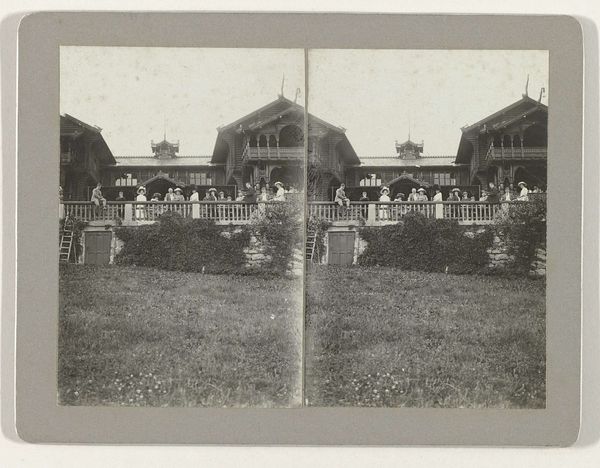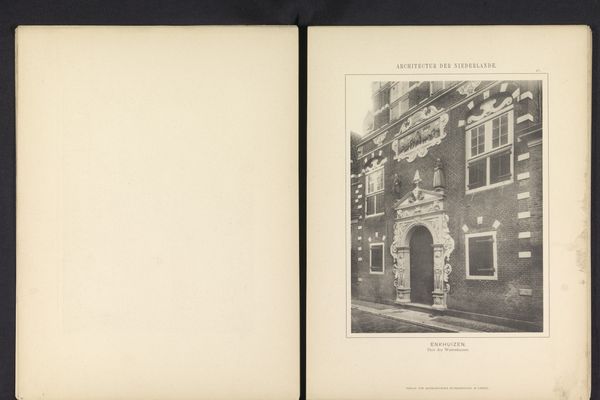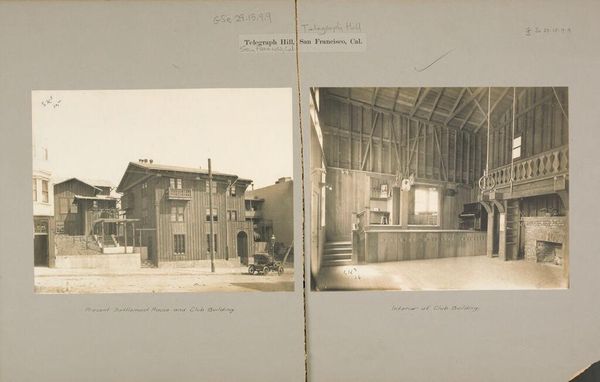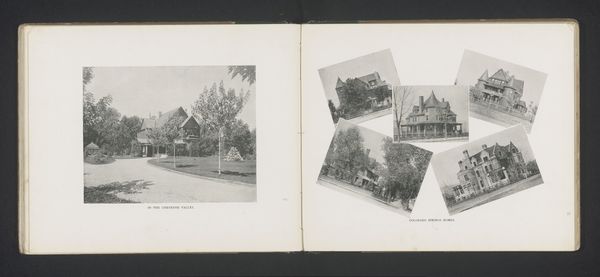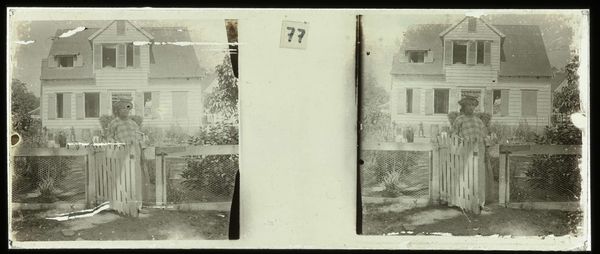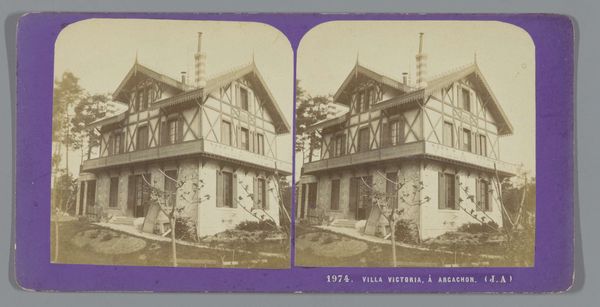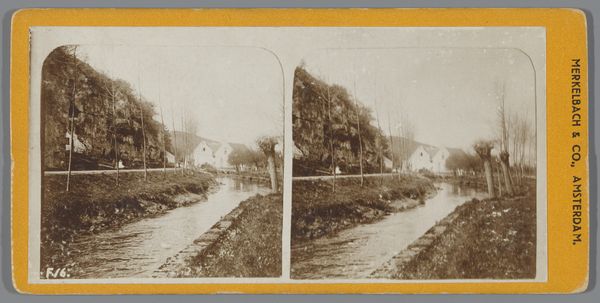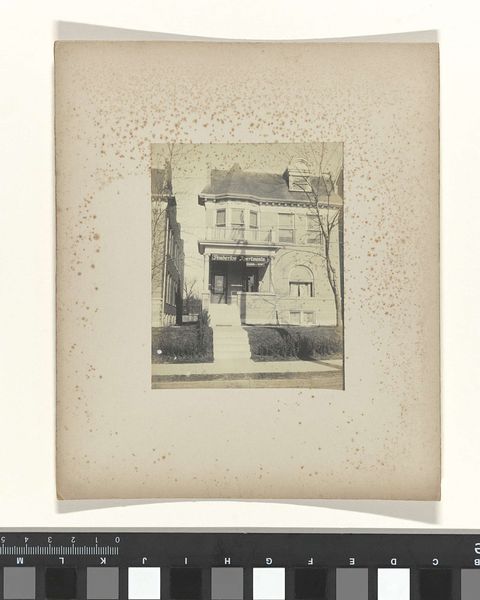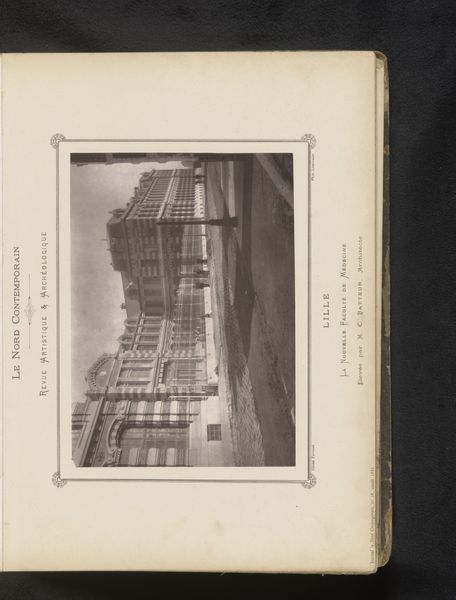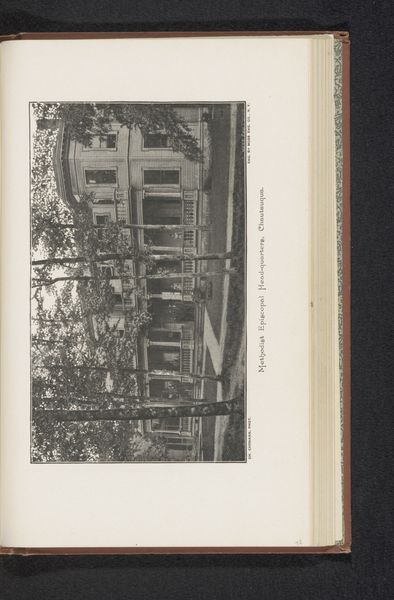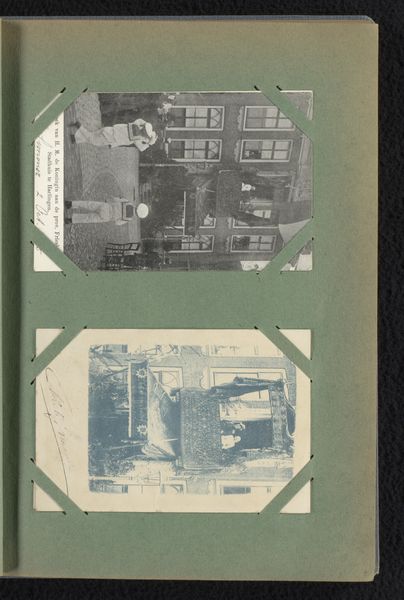
photography
#
landscape
#
photography
#
cityscape
Dimensions: height 81 mm, width 114 mm
Copyright: Rijks Museum: Open Domain
Editor: We're looking at a photograph by J. Dearden Holmes, taken between 1924 and 1926, titled "Huis waar Louis-Joseph de Montcalm gewoond heeft, Québec," which translates to "House where Louis-Joseph de Montcalm lived, Quebec." It’s a black and white image, a cityscape. What strikes me is the stillness, the stark composition. What do you make of it? Curator: Its starkness, as you say, is indeed notable. Consider the framing: we have a stereo image, two near-identical shots placed side-by-side. Notice how the architectural form, the house, dominates the composition through its verticality, almost prison-like with its barred windows and the climbing vines. The contrast of the dark facade against the light sidewalk, is a deliberate play with values. The texture is quite striking, especially how it plays against the smooth tones in the distance. Does this aesthetic decision say anything about a focus on structure, on surface? Editor: The contrast definitely creates depth. The woman walking along the street...is she simply a formal device to indicate depth? Or could it symbolize movement versus the stasis of the house? Curator: Potentially both. Semiotically, she serves to fix our gaze and guide it along the lines of perspective, enhancing the spatial construction of the image. Formally, observe how the bare trees act as intermediaries, a kind of screen between the rigid architecture and the flowing landscape behind it. Their branches repeat the line of the vine growth on the wall. Editor: It's fascinating how seemingly simple elements contribute to a deeper complexity, it makes me see a much grander idea in this image now. Curator: Precisely. Paying close attention to the details can open up how we receive and interpret the work beyond its literal depiction.
Comments
No comments
Be the first to comment and join the conversation on the ultimate creative platform.
